Polstar 5 Preview
With the Precept, Volvo's former motorsport arm has created a stunning concept that sets a design ‘north star’ for the Polestar brand and the Polestar 5.
Racing Origins
Polestar is rooted in racing. When an automaker wants to go racing, they have a few choices on how to get a car on track. One option is to create an in-house team to develop performance versions their production cars. The other is to seek out tuners who've already been modding out production models for track use. Polestar rose from the latter.
Polestar got its start as performance tuner, Flash Engineering. Flash Engineering raced modified Porsches, BMWs, and Volvos. In 2009, Flash Engineering ran two Volvo C30's in the Swedish Touring Car Championship under the name "Volvo team Polestar" along side their own entries–a pair of BMWs. With Tommy Rustad and Robert Dahlgren behind the wheel of the C30's, Volvo team Polestar won the championship beating out the two BMW’s.





On July 14, 2015, Volvo acquired full possession of Polestar. Polestar was handed two objectives: create a series of pumped up Volvo ICE cars, and build performance cars using Volvo's hybrid electrification technology. According to the announcement the deal included trademarks, software, and tuning hardware. It did not include the racing division of Polestar.
Polestar the Brand
Polestar became a brand after several years successfully selling performance enhanced Volvo's. Volvo's president and chief executive, Håkan Samuelsson announced on June 21, 2017 that Polestar is to become "a new separately-branded electrified global high performance car company".
Mr. Samuelsson continued, “Polestar will be a credible competitor in the emerging global market for high performance electrified cars. With Polestar, we are able to offer electrified cars to the world’s most demanding, progressive drivers in all market segments.”
The Precept
With the Precept, Polestar renews it's vow to create cars focused on design, tech, and sustainability. The concept is considered a step forward, not a leap. Meaning the point is to double-down on the very heart of what Polestar is. The way they put it in the announcement, "We've borrowed from tomorrow. Not fifty years from now.”
Design
Exterior Styling
As for the exterior, I see influences of Aston Martin and Tesla but with sharper creases. Its stance gives a precisely crafted linear vibe with angular yet flowing lines. ‘Athletic’ is how Polestar defines it. I'd have to agree. This thing is pretty. It's badass. It's pretty badass.
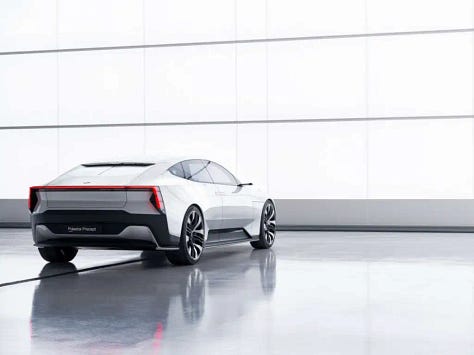

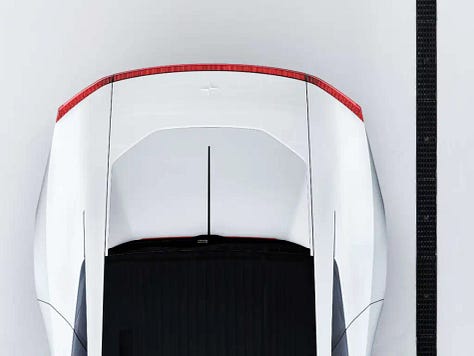
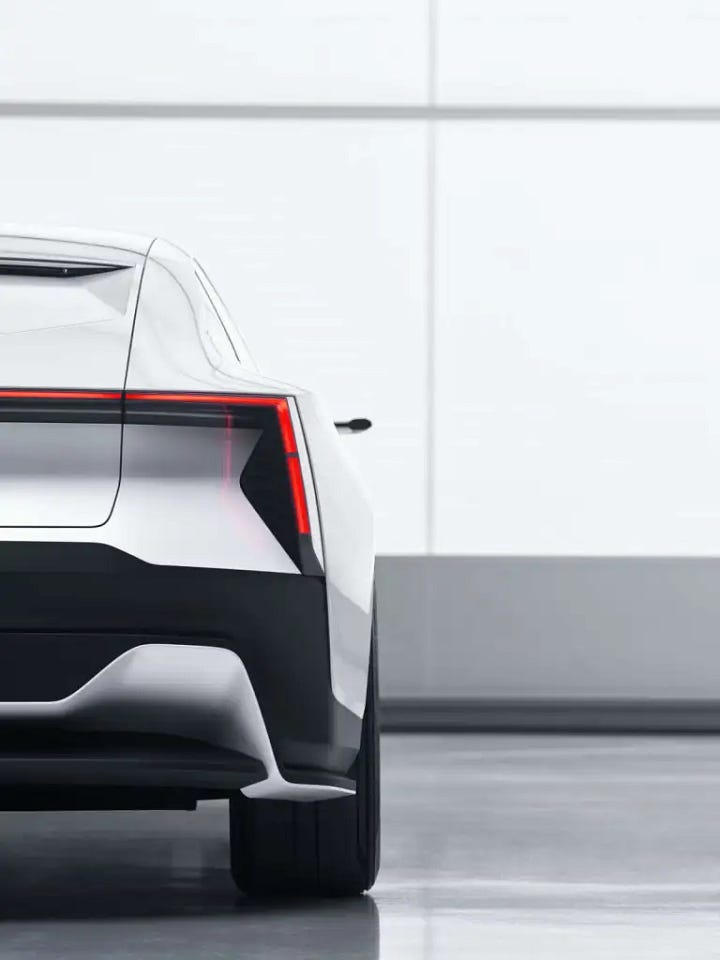
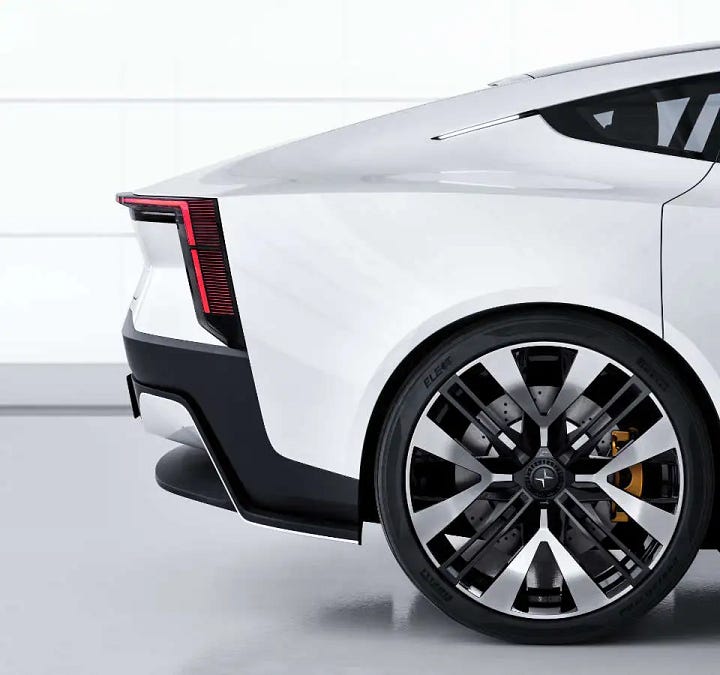
Viewed from the front, we are greeted with a split 'Thor's Hammer' LED lighting detail which gives a nod to its Volvo origins while providing a unique lighting statement.
These lead to an integrated front wing over the leading edge of the bonnet.
The wing improves airflow over the front of the car, increasing range.
Sharp character lines then draw your eye away from the front wing toward the A-pillars. This introduces the greenhouse structure comprised of a singular piece of glass that flows over the front and rear seats. Aft of the rear seats, a body panel closes out the rear hatch where an abrupt angle crashes down to create the rear facia.
The look says luxury and performance without being overtly either.
Interior Comforts
The Precept's cabin, as with many EVs these days, places the central focus on an iPad-like display.
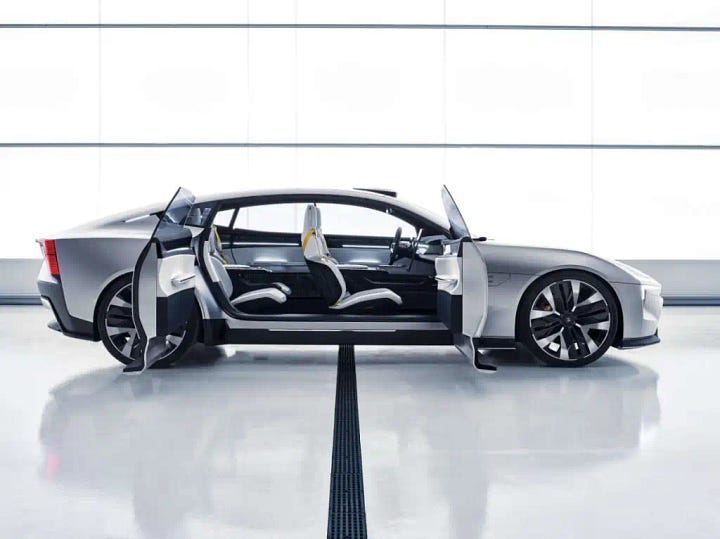
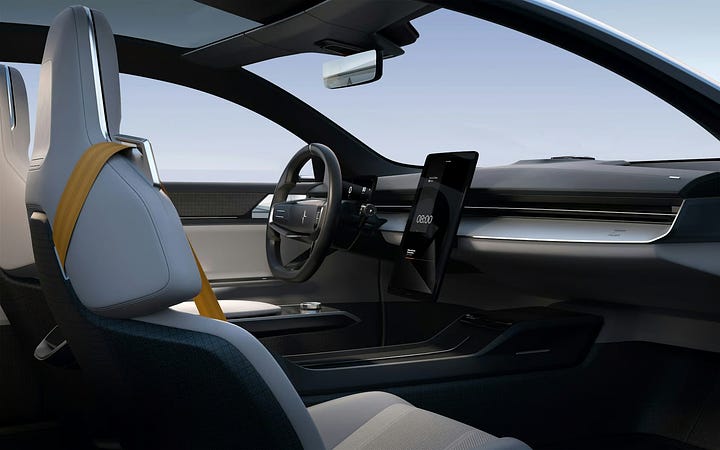
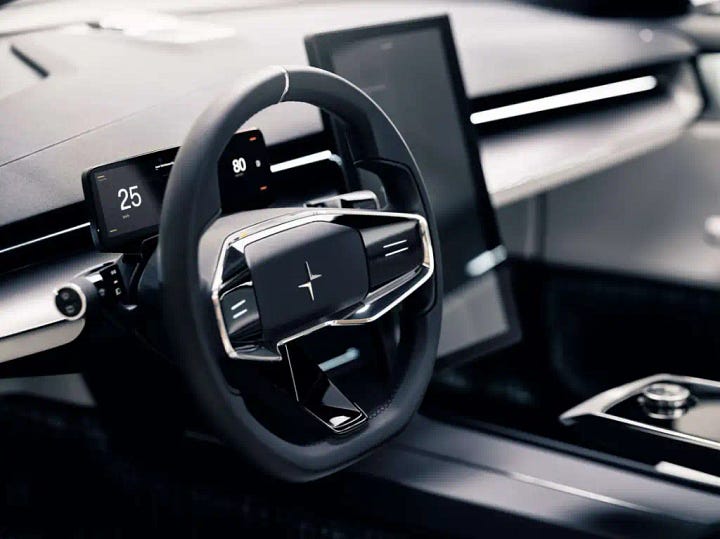

Rant warning!
I have one gripe about center display! To me it's just lazy to slap a display right onto the dash and call it a day (talking to you BMW).
Maybe it’s cost savings, I dunno.
But I'd argue the interior would benefit by finding a clever way to integrate the display into the dash.
The dash aside, this is a cabin I'd love to experience firsthand… seriously, it's one I can imagine enjoying on a daily basis. The interior is Polestar executing minimalist on another level.
Clean lines, textured materials, sleek surfaces, minimal shiny black plastic–all swathed in a muted pallet creating an inviting and cozy environment. The interior is a powerful statement of Swedish character.
Tech
Driver Assistance
As with every electric car, the Precept has no front grill. In it's place you'll find a transparent panel which Polestar named 'SmartZone'. The SmartZone comprises two radars and a high definition camera and other tech. With the Precept, Polestar integrates a new Lidar sensor. It's the bulbous item on the leading edge of the greenhouse. Lidar, along with SmartZone and software enhance the vehicle's driver assistance capabilities.
Video Mirrors
Other tech that arrives in countries outside the U.S. are camera-based side mirrors. Audi introduced similar mirros on the e-tron 55. The mirrors are housed in small, aerodynamic blades. Their image is presented on screens located high and forward on the door, below the side glass.
As an e-tron owner, the molding of the door cards includes a shallow cavity where the displays would be mounted. This position is not optimal. They're placed lower than a standard mirror and easily obscured by the passenger. A better place would be where a "window wing vent" would have lived back in the day. This is more inline with where one would naturally look for an external rear facing mirror.

Driver Awareness
The Precept features a driver awareness system that can detect when you're looking at a display and temporarily brighten the display to improve legibility in dim lighting or at night. The system may also help inform you that you may want to take a break, or suggest minding the road if it notices your focus is not on the road or driver displays.
Sustainability
In keeping with Polestar's goal to create a sustainable circular product cycle, the Precept incorporates a variety of reusable materials like flax, plastic bottles, fish nets, and cork.
Organic-based Fabrics and Materials
I had no clue how versatile flax is. We use it as a fabric with linen, or consume it as linseed oil. In the automotive world, flax threads can be used to create everything from dashboards and external panels to EV batteries. One Swedish company, Bcomp, has been producing flax fiber-reinforced parts. These are being used in cars racing in Formula E, British Touring Car, German Touring Car (DTM), and the Indianapolis 8 Hour endurance race which sport both Intercontental GT Challange and GT World Challenge America cars. Bcomp's flax-based parts have also found their way into BMW's M-series production cars.
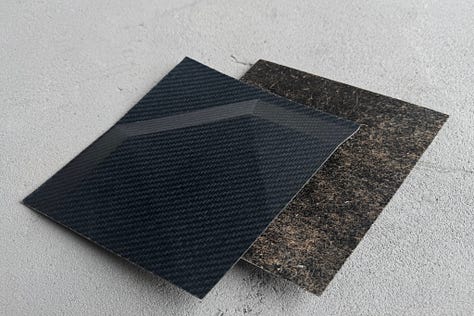





Polestar sources flax-based parts manufactured by Bcomp. The parts weigh up to 50% less than plastic-based parts and consume 70% less plastic. The concept also uses a structure based on flax which offers improved structural rigidity while reducing vibration by up to 250%.
Recycled Plastic
Plastic is a huge problem. Especially when used to create single-use products like straws, bottles, packaging, and cutlery. Much of if ends up in landfills, or worse, our oceans.
To help reduce waste, Polestar has chosen to incorporate PET in the making of 3D-knits used in their seats. Woven from a single thread, the 3D-knit material allows Polestar to fabricate a seat without any waste.
Fish Net Carpets
Carpets in the Precept are woven from materials derived from discarded fishing nets. Having grown up in a community where commercial fishing was a major player, I am aware of just how large these nets are. They're huge! There's a lot of material there and while I don't know how long a net can be used before it gets cast aside, it's good to know they're being reused.
Cork
Polestar has even chosen to integrate cork-based PVC over plastic-based PVC in Precept's interior, further reducing dependency on plastics.
Circular Production Cycle
With interior and exterior parts and materials being crafted or cast with organic materials, and battery components using rare earth elements, it is critical to recapture as much of these materials as possible. To that end, the Precept can be crushed and ground down to recover core materials which can then be used in new parts. This reduces production costs and brings Polestar a step closer to a full-circle production cycle.
Wrap it up, I’ll take it
This is one amazing concept I'd love to review. One day I'll have enough followers to get media cars. That day will be a while to come. Until then, I am looking forward to seeing the Precept roll off the assembly line later this year as the Polestar 5.

